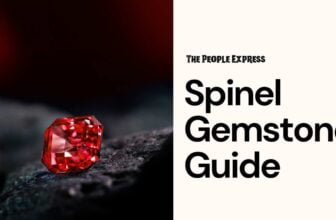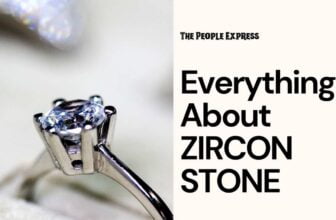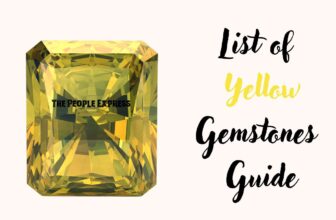Many of us have heard of the moonstone, but the sunstone gemstone is relatively unknown! The name alone is mysterious and intriguing. Called ‘sunstone’ due to its glittering inclusions and smooth sheen, this feldspar gemstone has been known for several centuries but not commonly used in jewellery. Rather, the sunstone was valued for trading and bartering.
Found in variations of red-brown hues, the sunstone is a beautiful addition to any jewellery collection. You might not know about the sunstone yet, but like many others before you, when you do, we are sure you will love it!
Sunstone Gemstone
What is sunstone?
Sunstone is a member of the feldspar group of gemstones, which incidentally is the most abundantly found of all minerals. In other words, there’s more feldspar than any other mineral on earth.
Feldspar can be further subdivided into two main categories based on the differences of their chemical composition. If you love technical terms then this is for you:
- Potassium feldspar – includes orthoclase (moonstone) and microcline (amazonite) varieties
- Plagioclase feldspar – includes labradorite, andesine and oligoclase (sunstone)
Based on its chemical composition, the sunstone belongs to the plagioclase feldspar group.
Sunstone is found in many places around the world but the best known come from India. Other locations include Canada, Madagascar, Russia, Norway and the USA.
What is aventurescence in sunstone?
When you look at a high quality sunstone, you may see a lively, sparkly glittering coming from within the stone.
This is what is known as aventurescence, also called schiller in the industry. This metallic glitter occurs due to hundreds of tiny, reflective inclusions within the stone. When touched by light, the inclusions act as reflectors, sending the light back out.
The inclusions in sunstone are usually hematite, pyrite, goethite or, in the case of Oregon sunstone, coppe. These impurities are metallic and often flat. As light hits the stone at a certain angle, you can clearly see the glittery reflection coming from within the stone. even if the inclusions are too small to create a proper aventurescent effect, there will still be a sheen due to the copper inclusions.
Not all sunstone varieties have aventurescence, however. It is a quality factor that adds value to the sunstone.
How do I evaluate the quality of a sunstone?
In determining the value of any precious stone, we always look to the 4Cs – cut, color, clarity and carat.
How to evaluate the color of sunstone
Sunstones are generally found in various shades of red, brown and orange. The most valuable are the darker, richer colors while paler sunstones don’t command high prices.
Although the aventurescent effect of sunstone usually results in a red-brown sheen, there are some varieties that have a green or blue sheen as well.
Evaluating the clarity of your sunstone
When it comes to gemstones, inclusions or impurities found within the stone are often seen as flaws and devalues the gemstone. However, when it comes to sunstones, the inclusions is what makes it special.
These sparkling impurities are what causes the stone to look attractive and have the aventurescent effect.
While sunstones are generally opaque to translucent, some of the highest quality sunstone can appear transparent with excellent clarity.
Checking out the cut of sunstone
The most important factor when it comes to sunstones is the cut.
Sunstones have to be cut expertly and carefully in order to maximize the beauty of the inclusions within. This is especially true of Oregon sunstone, as the copper inclusions are typically flat. When the stone is cut expertly, and viewed at a certain angle, light reflects of the impurities, causing them to sparkle.
Most sunstones for jewellery are faceted, to promote the reflection of the inclusions. Some, especially the translucent or opaque stones, are cut en cabochon. You will typically find sunstone cut into rounds, ovals, pears and marquise and not so much in angular cuts.
Some en cabochon sunstones exhibit chatoyancy or asterism. Chatoyancy is known as the ‘cat’s-eye’ effect where the stone reflects light in a line down its center resembling a cat’s eye. Asterism is when the stone reflects lights in a star-like pattern.
How to choose the carat weight of sunstone
Sunstones can be found in many sizes. Because it is an affordable stone, the size does not affect value much. The size you choose depends on your preferences.
Most retailers highlight the width and length of the sunstone, i.e. the size, rather than the carat weight. This gives you an exact measurement of the stone’s size. Remember that carat weight is relative to the density of the stone, so this varies from gemstone to gemstone.
What about enhanced or treated sunstone on the market?
There are currently no known enhancements or treated varieties of sunstone on the market. This means that any sunstone you buy is a naturally mined gemstone.
Note: This is not to say that enhancements or treatments are necessarily bad. Certain gemstones (such as rubies) are almost always treated to improve color and this is an accepted industry practice.
Sunstone value and price
The price of sunstones is affected by factors such as color, clarity and whether or not the stone exhibits quality aventurescence.
One of the best things about this gorgeous gemstone is that it is very affordable, fitting all budgets. However, high quality transparent specimens with excellent aventurescence can be costly and are the most sought after. Of these, sunstones that exhibit bright red hues and also the dichroism or trichroism are the most valuable.
Generally, pale stones retail at about $20 per carat, while the more darker hued stones can cost upwards of $50 per carat.
Sunstones in jewellery
Sunstone lends itself well to most jewellery applications. It’s subdued, quiet coclor makes it a perfect addition for a chic and sophisticated appearance.
Choose your favorite metal
While sunstone looks amazing against any metal color, it is especially beautiful when set in rose or yellow gold. These are perfect companion colors to the reddish hues of the sunstone. White gold and silver can give a more modern and trendier look.
Table of Contents
Toggle
Zircon Stone Guide





